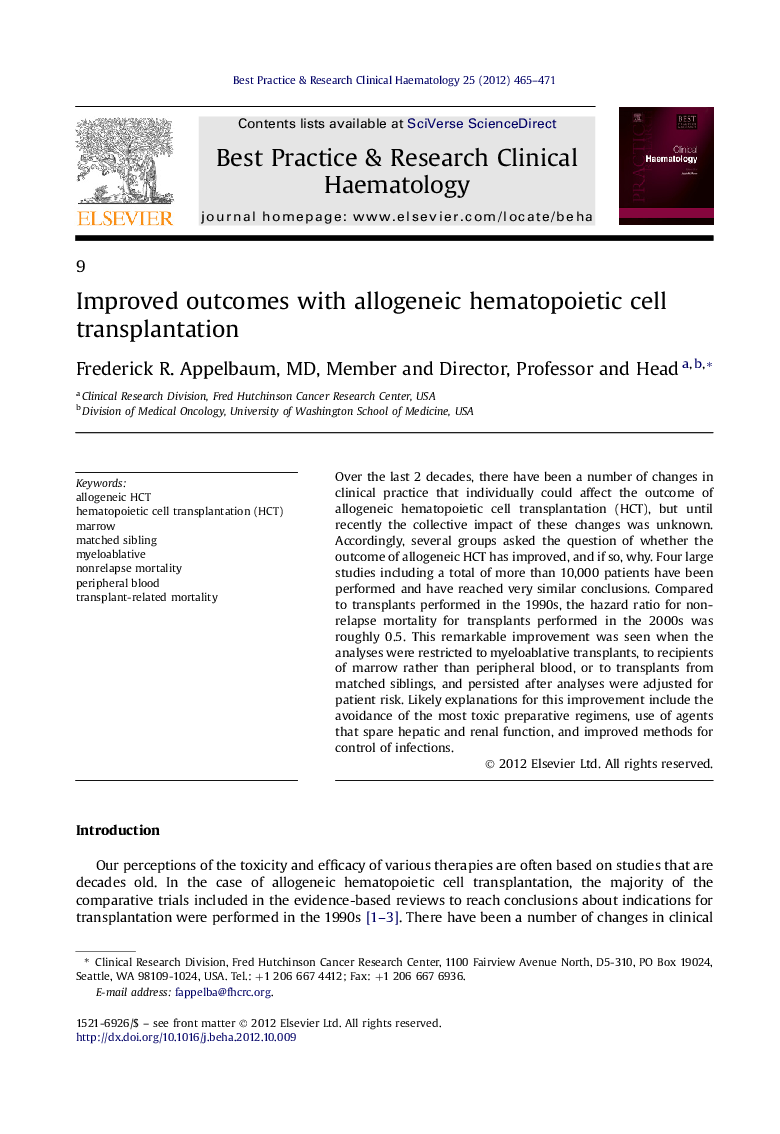| Article ID | Journal | Published Year | Pages | File Type |
|---|---|---|---|---|
| 2100194 | Best Practice & Research Clinical Haematology | 2012 | 7 Pages |
Over the last 2 decades, there have been a number of changes in clinical practice that individually could affect the outcome of allogeneic hematopoietic cell transplantation (HCT), but until recently the collective impact of these changes was unknown. Accordingly, several groups asked the question of whether the outcome of allogeneic HCT has improved, and if so, why. Four large studies including a total of more than 10,000 patients have been performed and have reached very similar conclusions. Compared to transplants performed in the 1990s, the hazard ratio for nonrelapse mortality for transplants performed in the 2000s was roughly 0.5. This remarkable improvement was seen when the analyses were restricted to myeloablative transplants, to recipients of marrow rather than peripheral blood, or to transplants from matched siblings, and persisted after analyses were adjusted for patient risk. Likely explanations for this improvement include the avoidance of the most toxic preparative regimens, use of agents that spare hepatic and renal function, and improved methods for control of infections.
